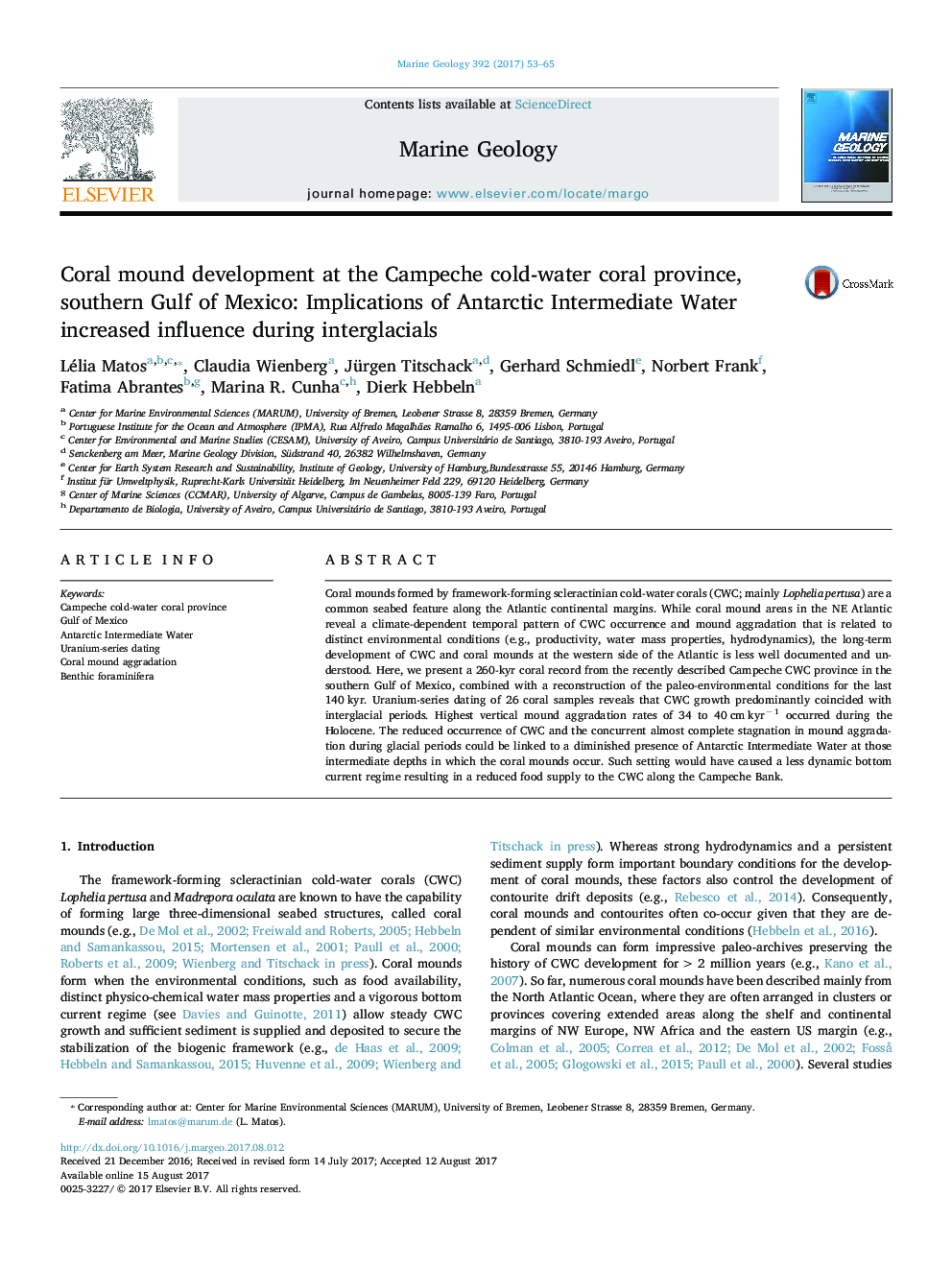| Article ID | Journal | Published Year | Pages | File Type |
|---|---|---|---|---|
| 5784474 | Marine Geology | 2017 | 13 Pages |
Abstract
Coral mounds formed by framework-forming scleractinian cold-water corals (CWC; mainly Lophelia pertusa) are a common seabed feature along the Atlantic continental margins. While coral mound areas in the NE Atlantic reveal a climate-dependent temporal pattern of CWC occurrence and mound aggradation that is related to distinct environmental conditions (e.g., productivity, water mass properties, hydrodynamics), the long-term development of CWC and coral mounds at the western side of the Atlantic is less well documented and understood. Here, we present a 260-kyr coral record from the recently described Campeche CWC province in the southern Gulf of Mexico, combined with a reconstruction of the paleo-environmental conditions for the last 140 kyr. Uranium-series dating of 26 coral samples reveals that CWC growth predominantly coincided with interglacial periods. Highest vertical mound aggradation rates of 34 to 40 cm kyrâ 1 occurred during the Holocene. The reduced occurrence of CWC and the concurrent almost complete stagnation in mound aggradation during glacial periods could be linked to a diminished presence of Antarctic Intermediate Water at those intermediate depths in which the coral mounds occur. Such setting would have caused a less dynamic bottom current regime resulting in a reduced food supply to the CWC along the Campeche Bank.
Related Topics
Physical Sciences and Engineering
Earth and Planetary Sciences
Geochemistry and Petrology
Authors
Lélia Matos, Claudia Wienberg, Jürgen Titschack, Gerhard Schmiedl, Norbert Frank, Fatima Abrantes, Marina R. Cunha, Dierk Hebbeln,
